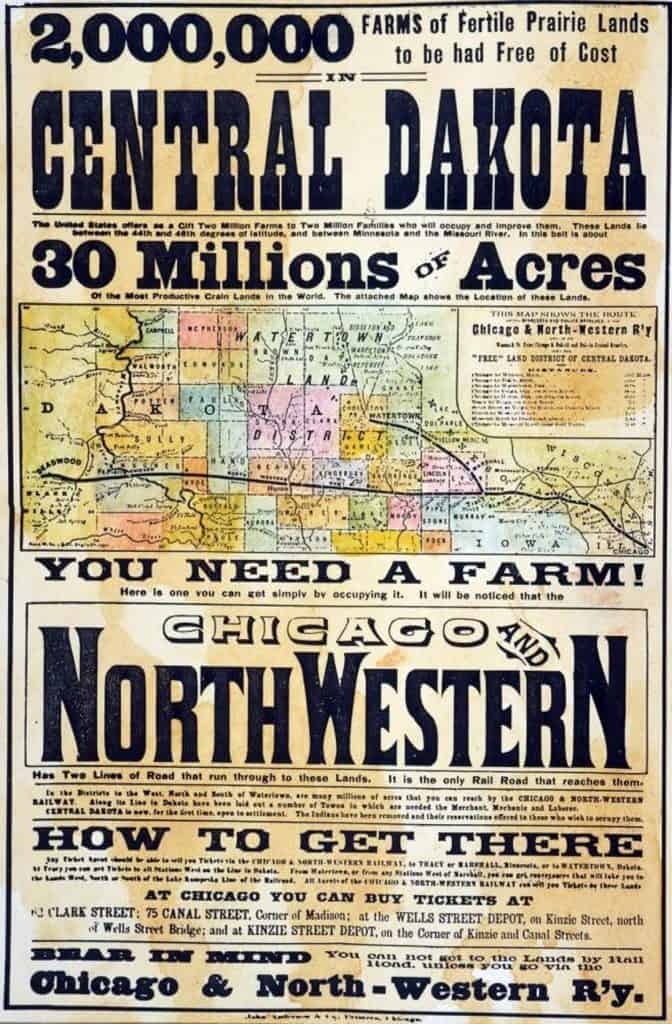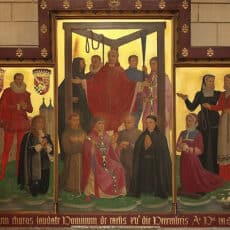
Joseph Cretin was born in France in 1799, was ordained there and volunteered for missionary work arriving in New York City in October 1838. The AOH was less than two years old at that time and there is no record of any contact that he made with the AOH, but it is likely that he did. He was on his way west and worked in Iowa ministering to Native Americans for eleven years. In 1850 the Church established a new diocese that included Minnesota and Dakota Territories and Cretin was assigned as its first bishop. Cretin arrived in St. Paul in July 1851 and shortly thereafter made his appearance in St. Paul’s first cathedral, a log cabin.
The white population of Minnesota and the Dakotas at that time was sparce. When Minnesota Territory was created in 1849, the total population was 4,500 (white) and very few of these pioneers were Catholic. Most were from New England. The bottom line was that Cretin had a geographically huge dioceses (Today it would encompass three states.) with hardly any flock. He wrote to the AOH in New York City directing attention to the advantages of the prairie life for Irish immigrants over the tenement existence in the great cities of the East.
The flood of immigrants arriving in New York City from the Great Famine found few jobs available: no Irish need apply. Cretin wrote letters for the Irish papers, especially the Freeman’s Journal. That,coupled with his unceasing efforts to attract settlers, were so successful that by the year 1856 the Catholic population of Minnesota had doubled.
When Bishop Cretin died in 1857, the year before Minnesota became a state, he had a growing flock and the 1857 Minnesota Census lists many Irish names. A few years later the Civil War started in 1861 followed by the Great Sioux War of 1862 in Minnesota. More Irish names can be found. Most historians will state that the German’s and Scandinavians settled Minnesota which is true, but they came later: first settlers were Irish and English.
John Ireland was born in County Kilkenny, Ireland and immigrated to the United States in 1848 where he settled in St. Paul in 1852. Cretin sent him to a seminary in France and he was ordained in St. Paul in 1861. Ireland served in the Civil War as Chaplain of the 5th Minnesota Volunteers returning to St. Paul after the war where he become a bishop in 1884. Ireland had a plan to bring Irish-America immigrants to Minnesota and it involved new railroads.
In order to promote construction of railroads to populate the west, the U. S. Congress allocated millions of acres of land to the railroads to create a rail system badly needed in the U. S. To recover their cost the railroads sold parcels of land to speculators who sold lots to those moving west.
His [Ireland’s] plan was to select a tract of land some thousands of acres in extent, the exclusive right of which was given to him by some of the railroad companies. Having thus obtained the land, Bishop Ireland formed a bureau and employed a secretary to conduct the affairs of the organization.
Through this bureau the Bishop bought the land, with full details as to price and conditions, under the notice of Catholic families who desired to secure homes in the West. Hundreds, perhaps thousands, of the heads of these families were members of the Ancient Order, for the letters from the Bishop were frequently read at the meetings of the Divisions and discussed at County and State Board meetings, as well as at the National Conventions. These colonies received the peculiar co-operation and sympathy of the members of the Order for the reason that they were under the especial patronage of the Church.[1]
Ireland’s arrangement was not unique. Up and down the east coast AOH divisions were helping Irish immigrants find new homes in the western states.
Today, the Archbishop John Ireland Division of the AOH in St. Paul continues the tradition of his effort to help people 150 years ago.
The division is at the Assumption Church, a parish established by Bishop Cretin in 1856. The church is the oldest church in St Paul.
Mike Eggleston
[1] O’Dey, 1096-1099.


